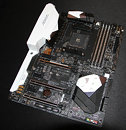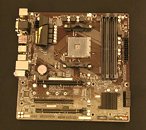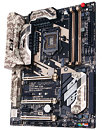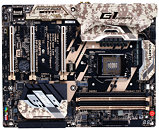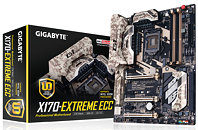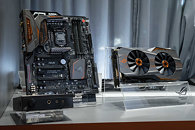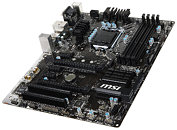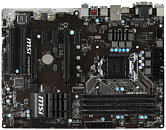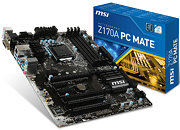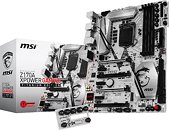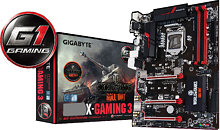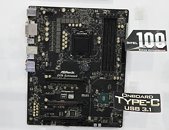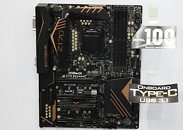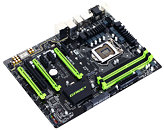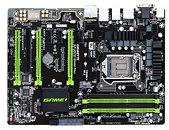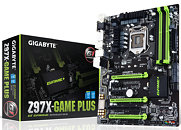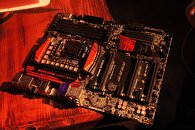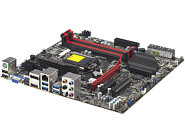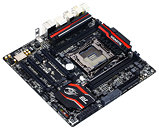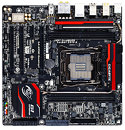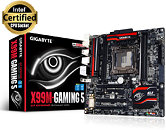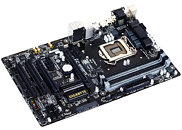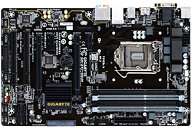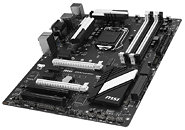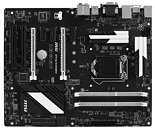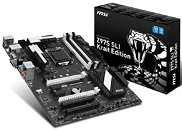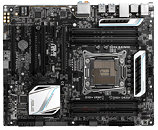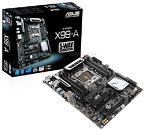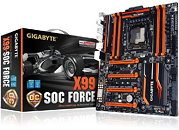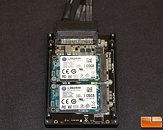
Four GIGABYTE Socket AM4 Motherboards Pictured
GIGABYTE showed off four socket AM4 motherboards, designed for the upcoming AMD Ryzen processors and 7th gen. A-series APUs, at its 2017 CES booth. The lineup begins with the AB350M-D3H, an entry-level micro-ATX board based on the mid-tier B350 chipset; the mid-range AB350-Gaming 3, the mid-high segment AX370-Gaming K5, and the AX370-Gaming 5. The AB350-D3H covers the basics, with a 7-phase VRM, one PCI-Express 3.0 x16 slot wired to the AM4 socket, a second x16 slot that's electrical x4 and wired to the B350 chipset, one legacy PCI slot; one 32 Gb/s M.2 slot and six SATA 6 Gb/s ports (from which two are directly wired to the AM4 socket); and connectivity that includes 6-channel HD audio, gigabit Ethernet, two USB 3.1 (10 Gb/s) ports, DVI, HDMI 2.0, and DisplayPort.
Moving up the ladder, the AB350-Gaming 3 is a gaming-grade board in the ATX form-factor, featuring a red+black color scheme. The board draws power from a combination of 24-pin ATX and 8-pin EPS power connectors; conditioning it for the CPU with a 7-phase VRM. The APU is wired to four DDR4 DIMM slots, and one PCI-Express 3.0 x16 slot. Other expansion slots include two x16 slots that are electrical x4, and two x1 slots. Storage connectivity includes one 32 Gb/s M.2 and six SATA 6 Gb/s ports (from which two are low-latency ports). Display outputs include DVI, DisplayPort, and HDMI. USB connectivity includes two USB 3.1 (10 Gb/s) ports, and six USB 3.0 ports. GIGABYTE deployed its gaming-grade AMPUp! onboard audio solution with a 115 dBA SNR CODEC, ground-layer isolation, audio-grade capacitors, a headphones amp, and gold-plated audio jacks. Network is care of an Intel-made gigabit Ethernet controller.
Moving up the ladder, the AB350-Gaming 3 is a gaming-grade board in the ATX form-factor, featuring a red+black color scheme. The board draws power from a combination of 24-pin ATX and 8-pin EPS power connectors; conditioning it for the CPU with a 7-phase VRM. The APU is wired to four DDR4 DIMM slots, and one PCI-Express 3.0 x16 slot. Other expansion slots include two x16 slots that are electrical x4, and two x1 slots. Storage connectivity includes one 32 Gb/s M.2 and six SATA 6 Gb/s ports (from which two are low-latency ports). Display outputs include DVI, DisplayPort, and HDMI. USB connectivity includes two USB 3.1 (10 Gb/s) ports, and six USB 3.0 ports. GIGABYTE deployed its gaming-grade AMPUp! onboard audio solution with a 115 dBA SNR CODEC, ground-layer isolation, audio-grade capacitors, a headphones amp, and gold-plated audio jacks. Network is care of an Intel-made gigabit Ethernet controller.
